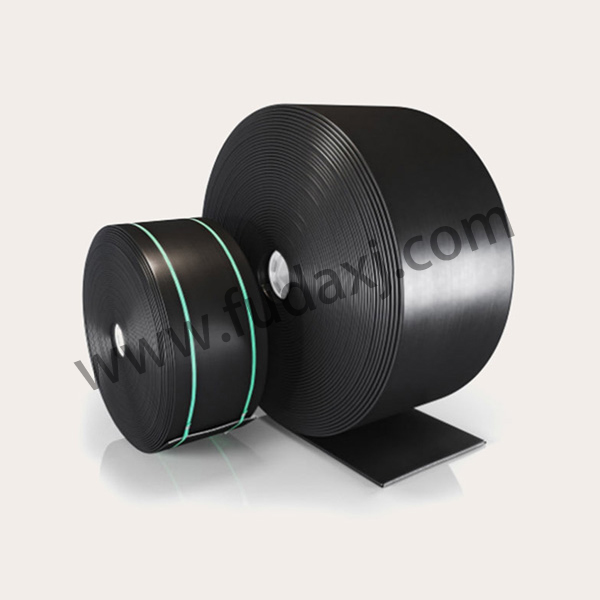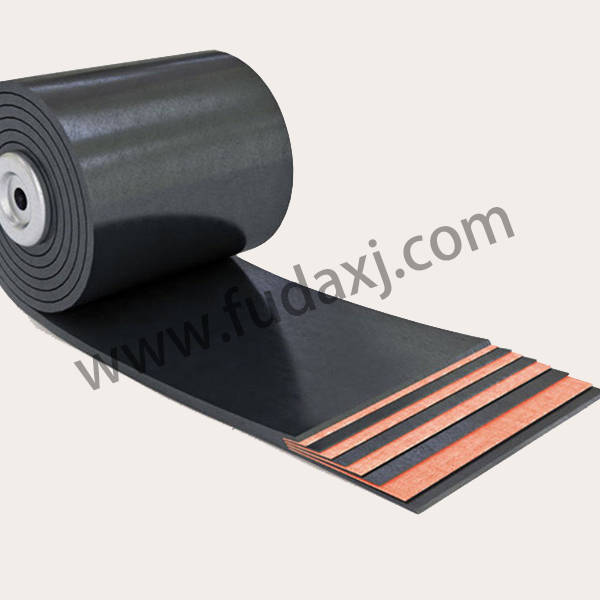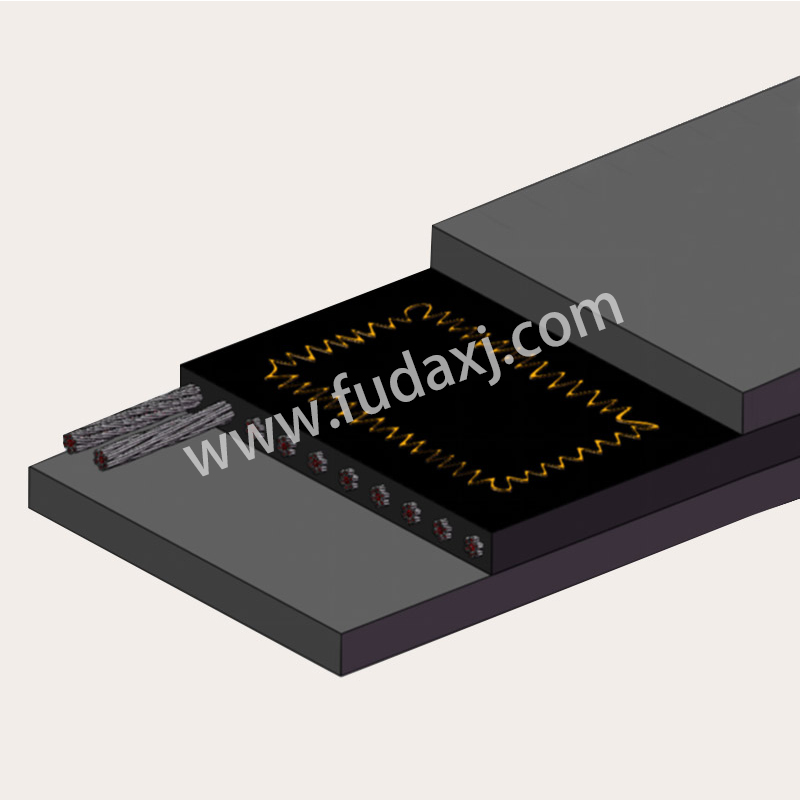
The characteristics of the skirt conveyor belt
Product structure: skirt-up conveyor belt (conveyor belt with corrugated ribs), which is mainly composed of the following three parts:
1. High-strength, high-wear-resistant base belt, with greater lateral rigidity and longitudinal flexibility.
2. High-strength heat-vulcanized rubber corrugated ribs.
3. Horizontal partitions to prevent objects from sliding down.
The bottom of the rib and the partition and the base belt are thermally vulcanized into one body. The height of the rib and the partition can reach 40-630mm. A canvas is added to the rib to enhance the tear resistance of the rib. The corrugated rib is soft and flexible. It can ensure that the conveyor belt smoothly passes through the end wheel and the tail wheel.
Conveying capacity: Convey various forms of bulk materials from coal, ore, sand to fertilizers and grains along horizontal, inclined and vertical directions with corrugated sidewall belts. The particle size of the material is not limited, from a small particle size to a large particle size of 400mm, and the conveying capacity can be from 1 cubic meter/hour to 6000 cubic meters/hour.
Product specifications: 400mm--2000mm, etc.
The characteristics of the skirt conveyor belt
The heat-resistant conveyor belt is made of multi-layer rubber cotton canvas (polyester cotton cloth) covered with heat-resistant or heat-resistant rubber and bonded together by high-temperature vulcanization. It is suitable for conveying hot coke, cement, slag and hot castings below 175°C. .
1. The specifications are the same as ordinary conveyor belts.
2. The product implements the HG2297-92 standard.
3. Heat-resistant conveyor belts can be divided into three types:
Type Ⅰ: Can withstand test temperature not greater than 100℃, high and short-time operating temperature 150℃, code T1.
Ⅱ type: can withstand test temperature not greater than 125 ℃, high and short-time operating temperature 170 ℃, code T2.
Type Ⅲ: can withstand the test of not more than 150℃
Temperature, high and short-time operating temperature 200℃, code T3.
 English
English 简体中文
简体中文 Español
Español عرب
عرب
 English
English





 Fax: 0086-576-83019528
Fax: 0086-576-83019528